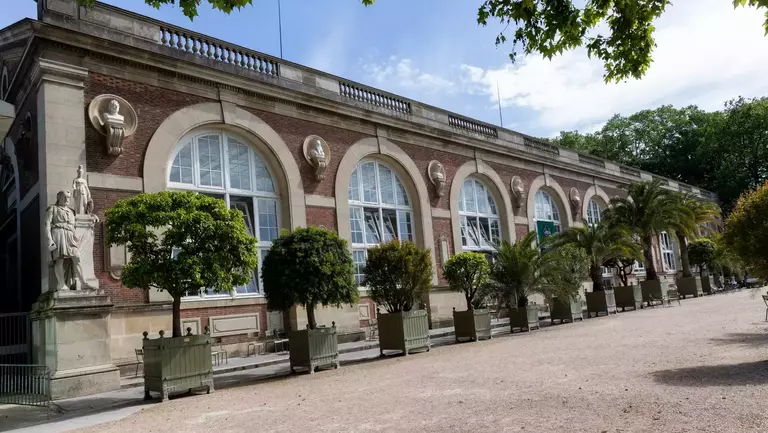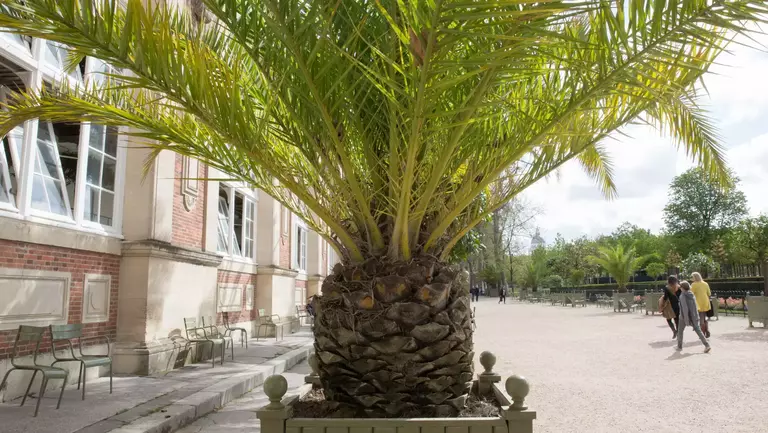In regions with cold winters, orangeries are used to protect citrus trees from harsh winters.
Since its creation by Marie de Médicis, there have been a number of successive orangery buildings in the Luxembourg Garden.
It is also a venue for exhibitions and concerts that enhance the experience of visitors to the garden.


The current Orangery is located in the western part of the garden, and dates back to 1839. It houses some 180 specimens in boxes, including 60 citrus trees, mainly bitter orange (34 in number), as well as date palms (19 phoenix, 7 chamaerops), oleanders (46), and pomegranate (24). The oldest and most beautiful specimens of bitter orange trees are displayed in the garden every year, from May to October, along the south façade of the Palace. Their age is estimated to be around 250 to 300 years.
In September, all the plants, except for the palm trees, undergo pruning to limit their size, maintain a regular spherical shape, and remove as many flowering and fruit-bearing structures as possible, as their development would overly tax the plants.
Adult orange trees are replanted every 12 to 15 years when the wood panels start to rot. Palm trees are replanted more frequently since the 4 cm thick oak panels can no longer withstand the extraordinary growth of the roots after 7 to 8 years.
The soil is reduced by 10 cm on each side and is then placed in a new or restored box of the same dimensions, with a strong iron or cast-iron frame for the oldest models (1856).
Once the box is closed, a soil mix rich in organic matter is compacted in successive layers inside the wooden panels. The heaviest boxes, such as those for large palm trees (weighing 4.5 tonnes), are transported in the garden using a flatbed carriage. Since 1996, the carriage tractor has been equipped with an electric motor to reduce noise and atmospheric pollution.
